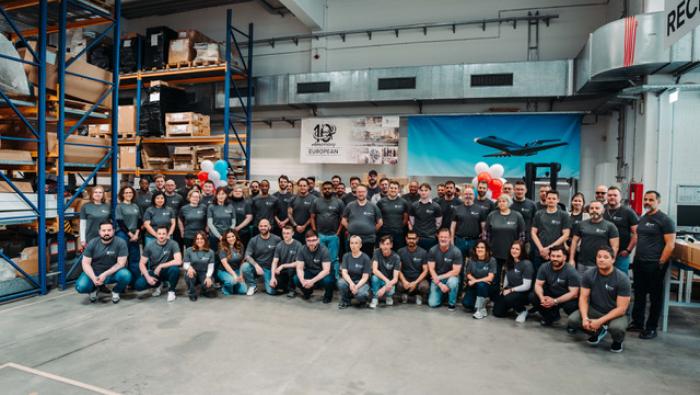An industry colleague reached out and requested that I address the topic of overworked A&Ps. In our email exchange, he explained “It’s getting out of hand.”
As I dug into this subject, I contacted several maintenance leaders within the industry. And the consensus was clear: maintenance professionals are overworked and are dealing with task saturation. Simply put, they have too much to do without the time, tools, or resources to do it.
And task saturation is such an issue that several years ago the NBAA Safety Committee added the topic to its list of the top-10 threats to aviation safety.
In the context of many maintenance technicians, they’re trying to cope with an ever-increasing list of duties, certifications, qualifications, and associated effort issues. And it can almost go without saying that as task overload increases, performance decreases. A lack of effective task management can lead to errors in judgment and innumerable other issues.
Laundry Duty?
I recently spoke on the topic of overworked A&Ps with Adam (not his real name), a director of aircraft maintenance for a major company. I came away from our conversation with a much better understanding of task saturation and its impact on aviation professionals, particularly those on the ground.
As Adam shared with me, maintaining the airplane should be the primary responsibility and focus of those in his profession. And although that focus is, as he called it, “mission-critical,” it’s being diluted by a whole host of ancillary duties that are being piled on aircraft maintenance crew—duties that don't necessarily have anything to do with aircraft airworthiness and readiness.
Adam gave me a prime example of what he’s talking about. He asked me, “Do you think we, in aircraft maintenance, should actually be doing the laundry for the crew instead of outsourcing it?” He said it’s “ancillary tasks” such as that one that increasingly are rolling down to the maintenance department.
Great Expectations
Laundry duties aside, the days of managing and servicing more mechanical connections, such as cables, push-pull rods, hard rigging, hydraulics, pneumatics, and structural work have been replaced by electronics, namely computers, servos, and fly-by-wire systems.
Aircraft mechanics are now expected to fully understand the myriad connections of data nodes throughout the aircraft. They have to be knowledgeable about how they interact, and know how to access that information and status, as well as also know how to resolve any conflict.
This is often on a level of computer coding, data prompts, and software troubleshooting. As Adam told me, “The distinct difference—and this very important to understand—is that, in general, mechanics want to touch, feel, see, and resolve tactile issues rather than navigate complex integrations of technological interfaces.”
It’s true: aircraft maintenance professionals have gone from a “Mr./Ms. Good Wrench” expectation to one of a “Jack/Jill-of-all-trades.” And, for all intents and purposes, it’s changing the maintenance professional’s role from that of a largely blue-collar technician to a professional engineer.
“We’re fully expected to be savvy on IT, computing, avionics, remote connectivity, electronics, systems integration, and software/data management,” Adam said.
With expectations of 24-hour connectivity and a plethora of technological improvements, the role of a licensed aircraft mechanic has shifted over recent years. Our blue-collar mechanics have effectively transitioned to white-collar technical software engineers.
Tasks Roll Downhill
Suffice it to say that if a task in the flight department doesn’t clearly fit into a particular department, it rolls to maintenance. This development is posing some big challenges for ongoing aviation operations.
Adam put it in perspective. “Maybe the industry, as a whole, needs to think about what’s required of a ‘cabin entertainment connectivity specialist,’” he said. “It sounds like it might not be too big a deal to sit in your seat and turn on the streaming TV or connect to the internet, but the level of technology that goes on behind the scenes to keep that equipment operating can be very complex. And it’s definitely not my field of expertise.”
Silver Lining
Fortunately, there’s some good news in the evolving role of an aircraft maintenance professional into a perceived technical expert. For one, it might attract the up-and-coming generations. Those who grew up coding and gaming, for instance, might be drawn to the idea that an aircraft maintenance engineer has such increasingly more varied—and more technical—requirements for the job.
Working off of that idea—these more varied and technical skill-oriented roles are becoming the “new normal.” I do think that there are solutions to the challenge of task saturation. It seems apparent that what the industry needs is a reboot of its maintenance professional “roles and responsibilities” standards.
As my friend Adam articulated it, how do we identify who should be filling these roles? How should we clarify what the certification requirements and the status of these roles ought to be? And what can we do as an industry to help improve the process of succession planning, as well as get the right talent to handle an increasingly disparate set of tasks?
HR could be a key player in helping to redefine these rapidly evolving roles and responsibilities. Perhaps, with HR’s help, and by bringing in more employees such as a hangar assistant or even interns, we can alleviate some of the increasing pressures.
There’s no exaggeration in saying that aviation maintenance professionals are bona fide problem-solvers. After all, they’re men and women who historically pride themselves on being able to fix anything—anywhere. Finding a fix for this task saturation issue doesn’t seem to be beyond their countless capabilities.
Sheryl Barden, CAM, is the president and CEO of Aviation Personnel International, the longest-running recruiting and HR consulting firm exclusively serving business aviation. A thought leader on all things related to business aviation professionals, Barden is a former member of NBAA’s board of directors and currently serves on the NBAA advisory council.









